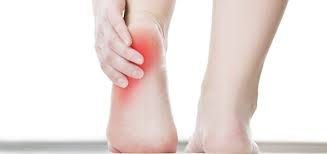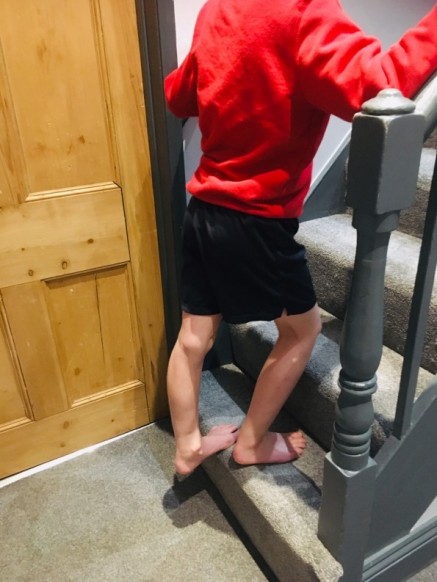Your Child's Hospital Journey

Heel Pain
Heel pain can be caused by Sever's disease (or Calcaneal apophysitis).
It is an inflammation of the growth plate in the heel of growing children. The condition presents as pain in the heel and is caused by repetitive stress to the heel and is thus particularly common in active children. It usually resolves when the bone has completed growth or activity is lessened.
The most prominent symptom of Sever's disease is heel pain which is usually aggravated by physical activity such as walking, running or jumping. The pain is localised to the back and under side of the heel (the calcaneal apophysis). Sometimes, the pain may be so severe that it may cause limping and interfere with physical performance in sports. External appearance of the heel is almost always normal.
Sever's disease is directly related to overuse of the bone and tendons in the heel. This can come from playing sports or anything that involves a lot of heel movement. It can be associated with starting a new sport, or the start of a new season. It affects children between the ages of eight and 13 as their bones often grow at a faster rate than their tendons, causing a shortening of the heel cord. The tight heel tendons may put too much tension on the back of the heel where they attach. This can injure that part of the heel (the calcaneal apophysis), which is still an immature mixture of bone and growing cartilage. Overuse causes injury and inflammation at the heel. Too much weight bearing on the heel can also cause it, as can excessive traction since the bones and tendons are still developing. It involves both heels in more than half of patients.
Treatment
- Calf stretching exercises 2-3 times per day.

Place one foot fully on the bottom step. Shuffle the other foot half off the step. Allow the heel to drop down, keeping the knee straight until a stretch is felt (this should not be painful). Hold for 30 seconds, repeat 3 times each side.
- Avoid excessive running on hard surfaces.
- Use quality, well-fitting shoes with firm support and a shock-absorbent sole.
- Using R.I.C.E. (Rest, Ice, Compression, Elevation).
- Gel insoles can be helpful in some cases.
Pain usually settles within 6 – 12 months but sometimes symptoms may persist for up to two years. Children with Sever’s disease recover completely with no long-term problems.
